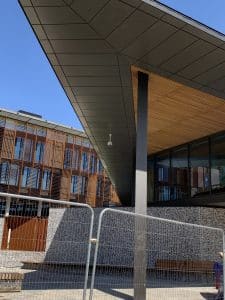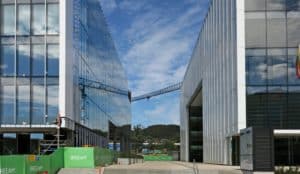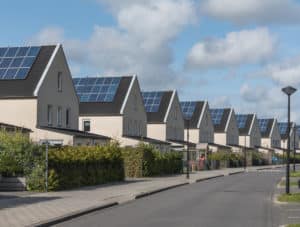Building to Net Zero: costing carbon in construction is a report set out by the Environmental Audit Committee. Today we’re looking back on the report and unpicking what it all means.
Back in May, the Environmental Audit Committee (EAC) published their ‘Building to net zero: costing carbon in construction‘ report, which explores the role of the built environment in helping the UK to reach net zero by 2050 and achieve a 68% reduction in carbon emissions by 2030.
Unsurprisingly, this was (and is!) an incredibly important report. The UK’s built environment is responsible for 25% of the UK’s greenhouse gas emissions – these greenhouse gases are released at every single stage of the construction cycle. For the sustainably conscious among us, it’s pretty clear that these emissions must be reduced if we want any chance of hitting net zero by 2050.
So, why is more not being done to make this a reality? Well, that’s precisely what the EAC ‘Building to net zero’ report unpacks. According to the report, to date there has been a worrying lack of Government impetus to reduce or even access these emission levels. The need for action is becoming more and more urgent.
READ: NET ZERO WILL REQUIRE COLLABORATION NOT CONFLICT
What does the Building to Net Zero: costing carbon in construction report say?
EAC’s ‘Building to Net Zero: costing carbon in construction’ report revealed that the sector had received “little government guidance” towards achieving UK environmental targets, arguing that the industry’s “embodied carbon emissions” had been largely “ignored”.
It also wrote that too many buildings were being demolished without “understanding the whole-life carbon impact”, and that the government should ask the industry to prioritise reusing and retrofitting buildings.
RELATED: LOW CARBON RETROFITTING – THE ULTIMATE GUIDE
The report goes on to set out clear actions and recommendations for the government to get the sector back on track to net zero. This included encouraging retrofits over new-builds to reserve resources, reduce embodied carbon emissions, counteract demolition waste and deliver cost-effective and sustainable solutions to fulfil the ever increasing housing demand.
In addition, they stated that mandatory whole-life carbon assessments and targets were needed to crack down on embodied carbon. This information could then be utilised by constructors in order to determine the best low-carbon materials for the project at hand.
YOU MIGHT LIKE: 7 THINGS YOU MIGHT NOT KNOW ABOUT BUILDING RETROFITS
AND: BREEAM RESPONSIBLE SOURCING OF MATERIALS
What next?
While we still await an official Government response, the time is now for those working in the sector to step up and play their part in the fight against the climate emergency.
Here at Buildpass, we are experts in low energy buildings. We run a selection of CPDs and training opportunities, as well as consultations to help you on your way to building better.
We would love to connect and help you. Get in touch to find out more.




















